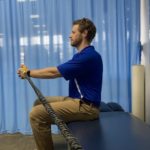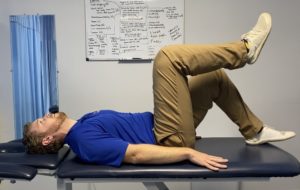Are you tired of dealing with chronic pain or muscle tightness? Dry needling, also known as trigger point dry needling or dry needle therapy, might be the solution you’ve been searching for. This innovative technique is popular for its ability to relieve pain and improve muscle function. At Joints in Motion Physical Therapy & Wellness, we offer dry needling at our clinics in Charleston, Goose Creek, and Mount Pleasant to help patients feel their best.
What Is Dry Needling?
Dry needling is a therapeutic technique performed by trained physical therapists. It involves using thin, sterile needles to target myofascial trigger points (commonly referred to as muscle knots). Unlike acupuncture, which is rooted in traditional Chinese medicine, dry needling is based on Western medical principles and focuses on relieving musculoskeletal pain and dysfunction.
How Does Dry Needling Work?
Trigger points can develop in muscles due to overuse, injury, or stress, leading to tightness, pain, and restricted movement. When a dry needle is inserted into a trigger point, it helps:
- Release muscle tension
- Increase blood flow
- Reduce pain signals
- Restore normal muscle function
This process can result in significant relief from pain and improved range of motion, often within just a few sessions.
Benefits
This technique numerous benefits for a variety of conditions, including:
- Pain Relief: Targets and alleviates chronic and acute pain caused by trigger points.
- Improved Mobility: Reduces muscle tightness, allowing for better range of motion.
- Faster Recovery: Enhances healing by increasing circulation and reducing inflammation.
- Treats a Range of Conditions: Effective for issues such as:
- Neck and back pain
- Shoulder pain
- Sports injuries
- Headaches and migraines
- Plantar fasciitis
- Sciatica
What to Expect During a Session
At Joints in Motion Physical Therapy & Wellness, your session will begin with a thorough assessment by one of our skilled physical therapists. Here’s what you can expect:
- Evaluation: Your therapist will identify areas of pain and tightness to determine the best treatment plan.
- Treatment: Thin needles will be gently inserted into specific trigger points. You may feel a slight twitch or mild discomfort, which is a positive sign that the muscle is releasing tension.
- Post-Treatment: Most patients experience immediate relief, although some may feel soreness similar to a workout. This typically resolves within 24-48 hours.
Dry Needling in Charleston, Goose Creek, and Mount Pleasant
Our clinics in Charleston, Goose Creek, and Mount Pleasant are proud to offer dry needling as part of our comprehensive physical therapy services. Whether you’re recovering from an injury, managing chronic pain, or looking to optimize your athletic performance, our experienced therapists are here to help.
Why Choose Joints in Motion Physical Therapy & Wellness?
- Expert physical therapists trained in advanced dry needling techniques
- Convenient locations in Charleston, Goose Creek, and Mount Pleasant
- Personalized care plans tailored to your specific needs
- Commitment to helping you achieve lasting results
Get Started Today
If you’re ready to experience the benefits of dry needling, schedule an appointment at one of our clinics in Charleston, Goose Creek, or Mount Pleasant. Let us help you reduce pain, improve function, and get back to doing what you love.
Contact Joints in Motion Physical Therapy & Wellness today to learn more or to book your first session. Relief is just a call away!














